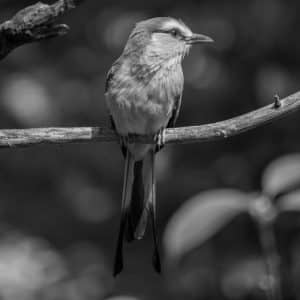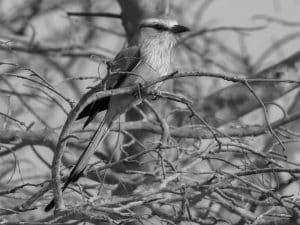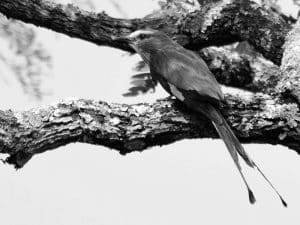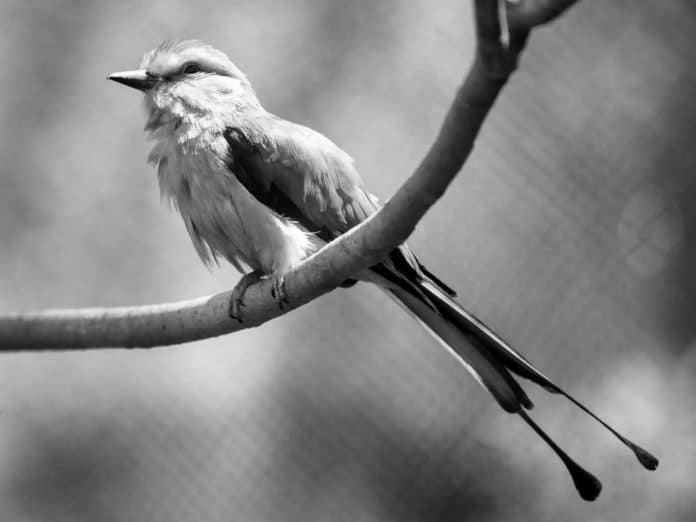Introduction to the Racket-Tailed Roller
Welcome to the enchanting world of the Racket-Tailed Roller, a magnificent bird species that graces the skies of Tanzania with its stunning aerial displays. The Racket-Tailed Roller in Tanzania, scientifically known as Coracias spatulatus, is a member of the roller family and is renowned for its vibrant plumage and captivating acrobatics. With its distinctive long tail feathers and striking blue and green hues, this avian beauty is a sight to behold for bird enthusiasts and nature lovers alike.

Native to the East African region, the Racket-Tailed Roller is a symbol of grace and elegance in the avian kingdom. Its unique physical characteristics and captivating behaviors have made it a subject of fascination for ornithologists and wildlife enthusiasts. As we delve deeper into the world of the Racket-Tailed Roller, we will explore its habitat, distribution, aerial displays, conservation status, and its significance in the rich ecosystem of Tanzania.
Habitat and Distribution of the Racket-Tailed Roller in Tanzania
The Racket-Tailed Roller is primarily found in the savannas, woodlands, and open grasslands of Tanzania, where it thrives in diverse ecosystems characterized by a mix of trees, shrubs, and open spaces. This adaptable species is known to inhabit a variety of landscapes, from acacia-studded plains to riverine forests, making it a versatile and resilient bird in the Tanzanian wilderness.
In Tanzania, the Racket-Tailed Roller is distributed across different regions, including the Serengeti National Park, Tarangire National Park, and Ngorongoro Conservation Area. These iconic natural reserves provide the ideal habitats for the Racket-Tailed Roller, offering a rich tapestry of flora and fauna for the bird to forage, nest, and engage in its spectacular aerial displays.
The presence of the Racket-Tailed Roller in Tanzania is a testament to the country’s commitment to preserving its natural heritage and providing a haven for diverse bird species. As we embark on a journey to witness the Racket-Tailed Roller’s aerial prowess, it is essential to understand the significance of its habitat and distribution in sustaining the bird’s population in Tanzania.
The Aerial Display of the Racket-Tailed Roller
One of the most captivating aspects of the Racket-Tailed Roller is its mesmerizing aerial display, a breathtaking showcase of agility and beauty that mesmerizes onlookers. During the breeding season, male Racket-Tailed Rollers engage in elaborate flight performances to attract potential mates and establish their territories. These displays are a testament to the bird’s courtship rituals and its remarkable ability to navigate the skies with finesse and grace.
The aerial display of the Racket-Tailed Roller is characterized by a series of swoops, dives, and mid-air acrobatics, all accompanied by a symphony of calls that echo through the Tanzanian wilderness. The male bird’s vibrant plumage, adorned with shades of blue, green, and hints of purple, becomes a vibrant blur as it maneuvers through the air, leaving spectators in awe of its aerial prowess.
As the male Racket-Tailed Roller performs its aerial ballet, it showcases its long, distinctive tail feathers, which fan out gracefully as it executes intricate flight patterns. These exquisite tail feathers, resembling delicate rackets, add an extra dimension of elegance to the bird’s display, creating an enchanting spectacle that embodies the epitome of avian grace and beauty.
Conservation Status of the Racket-Tailed Roller
The Racket-Tailed Roller, like many bird species, faces various conservation challenges in the modern era. Habitat loss, human encroachment, and climate change pose significant threats to the bird’s natural habitats and breeding grounds, putting pressure on its population in Tanzania and beyond. As a result, the conservation status of the Racket-Tailed Roller is of paramount importance in ensuring the species’ long-term survival and well-being.
According to the International Union for Conservation of Nature (IUCN), the Racket-Tailed Roller is currently classified as a species of Least Concern, indicating that its global population is relatively stable. However, localized threats and environmental changes in Tanzania necessitate proactive conservation efforts to safeguard the bird’s habitats and mitigate potential risks to its survival.
In response to these conservation challenges, various organizations and wildlife authorities in Tanzania have implemented measures to protect the Racket-Tailed Roller and its natural habitats. These initiatives include habitat restoration projects, community-based conservation programs, and research efforts aimed at understanding the bird’s ecological needs and behaviors. By raising awareness about the conservation status of the Racket-Tailed Roller, we can contribute to the collective efforts to protect this emblematic species for future generations to cherish.
Best Places for Birdwatching in Tanzania

Tanzania is a haven for birdwatchers, offering a diverse array of habitats and an abundance of avian species, including the magnificent Racket-Tailed Roller. For enthusiasts seeking to observe and photograph this aerial marvel in its natural environment, several key locations in Tanzania provide exceptional opportunities for birdwatching and wildlife encounters.
Serengeti National Park stands as an iconic destination for birdwatching, with its vast plains and diverse ecosystems providing a rich tapestry of avian life. Here, visitors can witness the Racket-Tailed Roller in its natural habitat, alongside a myriad of other bird species that call the Serengeti home. The park’s open grasslands and acacia woodlands create an ideal backdrop for observing the bird’s aerial displays and behavioral patterns.
Another renowned hotspot for birdwatching in Tanzania is Tarangire National Park, known for its majestic baobab trees and prolific birdlife. The park’s riverine habitats and seasonal marshes attract a myriad of avian species, including the Racket-Tailed Roller, offering birdwatchers an immersive experience amidst the sights and sounds of the Tanzanian wilderness.
For those seeking a unique birdwatching adventure, the Ngorongoro Conservation Area presents an enchanting setting for encountering the Racket-Tailed Roller and an array of other bird species. The diverse landscapes within the conservation area, from the crater floor to the highland forests, provide a varied and picturesque backdrop for birdwatching enthusiasts to explore and appreciate the natural wonders of Tanzania.
Tips for Spotting the Racket-Tailed Roller
Spotting the elusive Racket-Tailed Roller in the wild requires patience, keen observation, and an understanding of its habitat preferences and behavioral cues. Whether you are a seasoned birdwatcher or a novice enthusiast, employing the following tips can enhance your chances of encountering this captivating species during your wildlife adventures in Tanzania.
First and foremost, familiarize yourself with the Racket-Tailed Roller’s distinctive features and calls to aid in identification. The bird’s striking blue and green plumage, coupled with its long, racket-shaped tail feathers, make it a visually distinctive species, particularly during its aerial displays. Additionally, the Racket-Tailed Roller’s vocalizations, characterized by a series of melodious calls and chirps, can serve as auditory markers for its presence in the surrounding landscape.
When venturing into the bird’s preferred habitats, such as savannas, woodlands, and open grasslands, pay attention to the bird’s behavioral patterns and flight paths. The Racket-Tailed Roller is known for perching on prominent branches or utility wires, from where it surveys its surroundings and launches into its aerial displays. By scanning the treetops and open spaces with a keen eye, you may catch a glimpse of the bird as it prepares for its mesmerizing flight performances.
Patience is a virtue when it comes to birdwatching, and this holds especially true for spotting the Racket-Tailed Roller. Take the time to immerse yourself in the natural rhythms of the Tanzanian wilderness, allowing for moments of stillness and observation that may lead to rewarding encounters with the bird. By adopting a patient and attentive approach, you can increase your likelihood of witnessing the Racket-Tailed Roller’s aerial displays and gaining a deeper appreciation for its graceful presence in the wild.
Photography Tips for Capturing the Racket-Tailed Roller
Capturing the beauty and elegance of the Racket-Tailed Roller through photography requires a blend of technical skill, artistic vision, and an understanding of the bird’s behavior. Whether you are an amateur photographer or a seasoned professional, these tips can help you create stunning visual mementos of the bird’s aerial displays and natural charm during your wildlife photography expeditions in Tanzania.
The Racket-Tailed Roller’s vibrant plumage and elegant flight maneuvers provide captivating subjects for photography, making it essential to equip yourself with the right gear for capturing the bird in action. A telephoto lens with a focal length of at least 300mm can enable you to zoom in on the bird’s aerial displays from a distance, allowing for detailed and dynamic shots that highlight its graceful movements and distinctive features.
Lighting plays a crucial role in bird photography, and the Racket-Tailed Roller’s aerial displays are best showcased in the soft, golden hues of early morning or late afternoon. As the bird takes to the skies, the warm light accentuates its colorful plumage and creates a magical ambiance for capturing its flight sequences. When photographing the Racket-Tailed Roller in flight, consider positioning yourself to take advantage of the natural light and the bird’s flight paths for optimal visual impact.
In addition to capturing the bird’s aerial prowess, seek opportunities to photograph the Racket-Tailed Roller in its natural habitat, perched on branches or engaging in behaviors such as preening or foraging. These moments offer intimate glimpses into the bird’s daily life and add depth to your photographic narrative, showcasing the Racket-Tailed Roller’s role in the Tanzanian ecosystem and its inherent beauty beyond its flight displays.
Racket-Tailed Roller’s Role in the Ecosystem
Beyond its captivating aerial displays and striking appearance, the Racket-Tailed Roller plays a vital role in the intricate web of life within the Tanzanian ecosystem. As an omnivorous bird, the Racket-Tailed Roller contributes to the ecosystem’s balance by consuming a varied diet that includes insects, small reptiles, and fruits, thereby influencing the population dynamics of its prey species and the dispersal of seeds in its foraging territories.
The bird’s foraging behaviors, particularly its consumption of insects, contribute to natural pest control within its habitats, helping to regulate insect populations and maintain the ecological equilibrium of the surrounding landscapes. Additionally, the Racket-Tailed Roller’s role as a seed disperser, facilitated through the consumption of fruits and subsequent excretion of seeds in different locations, contributes to the regeneration and diversity of plant species within its foraging range.
Furthermore, the Racket-Tailed Roller’s nesting activities and interactions with other bird species, such as sharing nesting sites with bee-eaters or starlings, contribute to the overall biodiversity and ecological dynamics of the Tanzanian wilderness. By understanding the bird’s ecological contributions, we gain a deeper appreciation for its significance in sustaining the delicate balance of nature and the interconnectedness of species within the ecosystem.
Efforts for Protecting the Racket-Tailed Roller in Tanzania

The conservation of the Racket-Tailed Roller in Tanzania is a collaborative endeavor that involves the collective efforts of government agencies, conservation organizations, local communities, and wildlife enthusiasts. Through a combination of conservation initiatives, research endeavors, and community engagement, dedicated efforts are being made to protect the bird’s habitats, mitigate threats, and raise awareness about its conservation status.
Habitat preservation and restoration play a fundamental role in safeguarding the Racket-Tailed Roller’s natural environments, ensuring that the bird has access to suitable nesting sites, foraging grounds, and breeding territories. Conservation organizations collaborate with local communities and government authorities to implement sustainable land management practices that support the preservation of key habitats for the bird and other wildlife species.
Research and monitoring programs focused on the Racket-Tailed Roller contribute to our understanding of its behaviors, population trends, and ecological requirements, providing valuable insights that inform conservation strategies and management plans. By studying the bird’s movements, breeding biology, and responses to environmental changes, researchers and conservationists can develop targeted conservation interventions that address specific threats to the species.
Community-based conservation initiatives involving local stakeholders are instrumental in fostering a sense of stewardship and responsibility for the protection of the Racket-Tailed Roller and its habitats. These programs empower communities to actively participate in conservation efforts, promoting sustainable livelihoods, environmental education, and the preservation of natural resources that are essential for the bird’s well-being and the overall health of the ecosystem.
Conclusion
In conclusion, the Racket-Tailed Roller stands as a symbol of elegance and grace in the avian realm, captivating audiences with its vibrant plumage and mesmerizing aerial displays in the Tanzanian wilderness. Through our exploration of the bird’s habitat, aerial prowess, conservation status, and ecological significance, we have gained a deeper appreciation for its role in the rich tapestry of Tanzania’s natural heritage.
As we continue to cherish and protect the Racket-Tailed Roller and its habitats, let us remain committed to preserving the splendor of this avian marvel for future generations to admire. By supporting conservation initiatives, engaging in responsible ecotourism, and advocating for the protection of the Tanzanian wilderness, we can ensure that the tailfeathers of elegance continue to grace the skies and inspire awe for years to come.


































